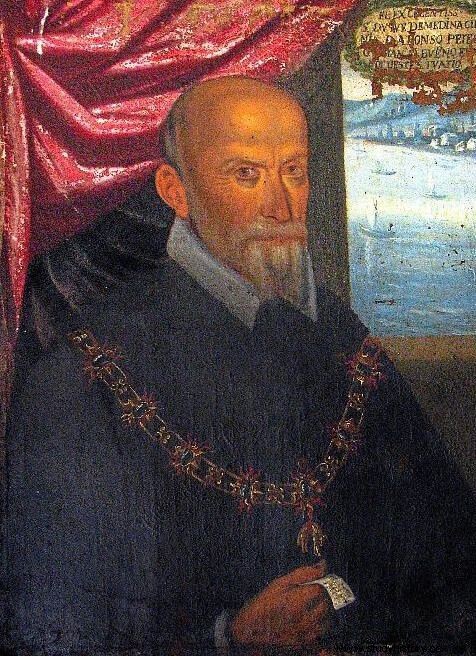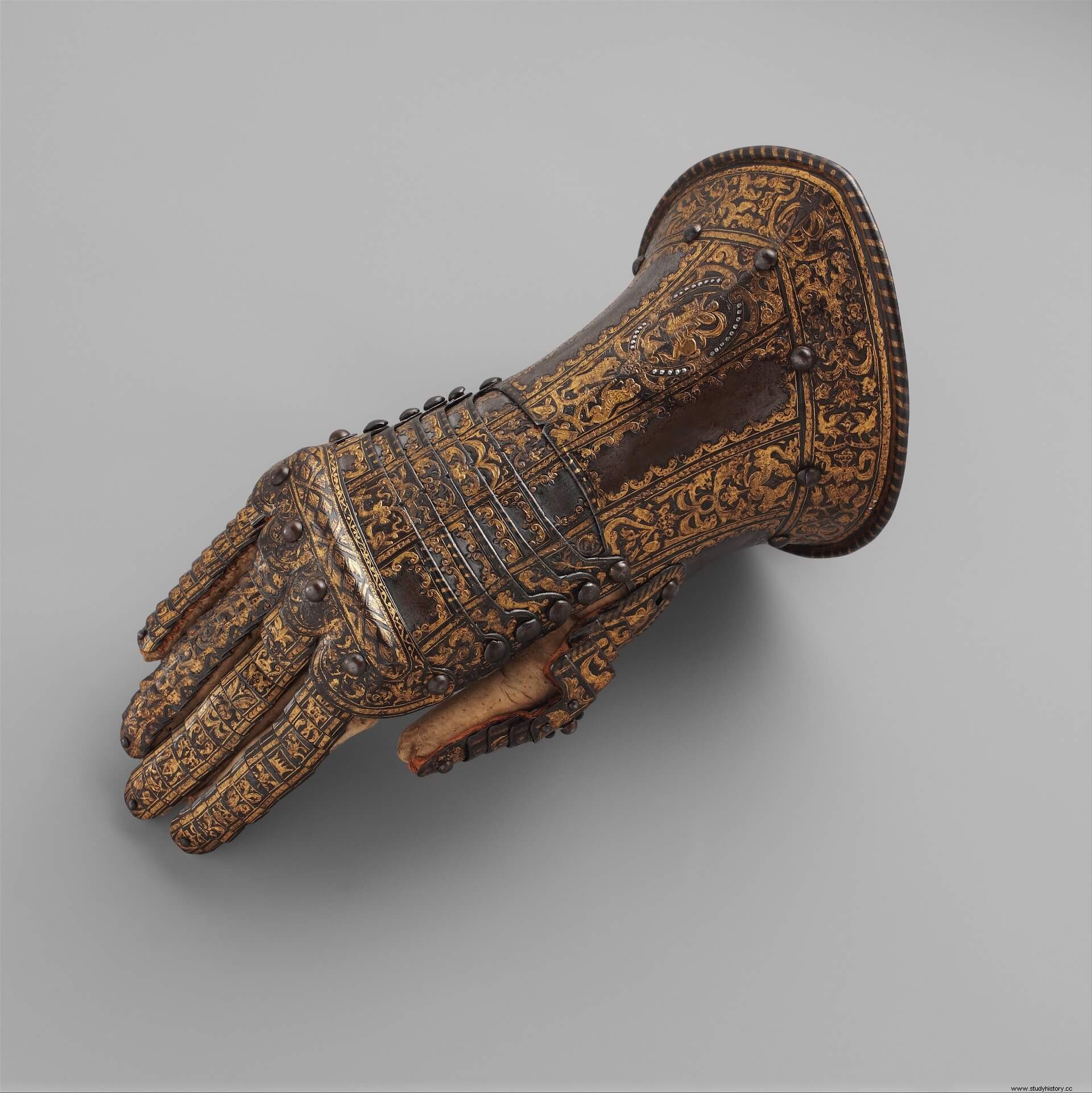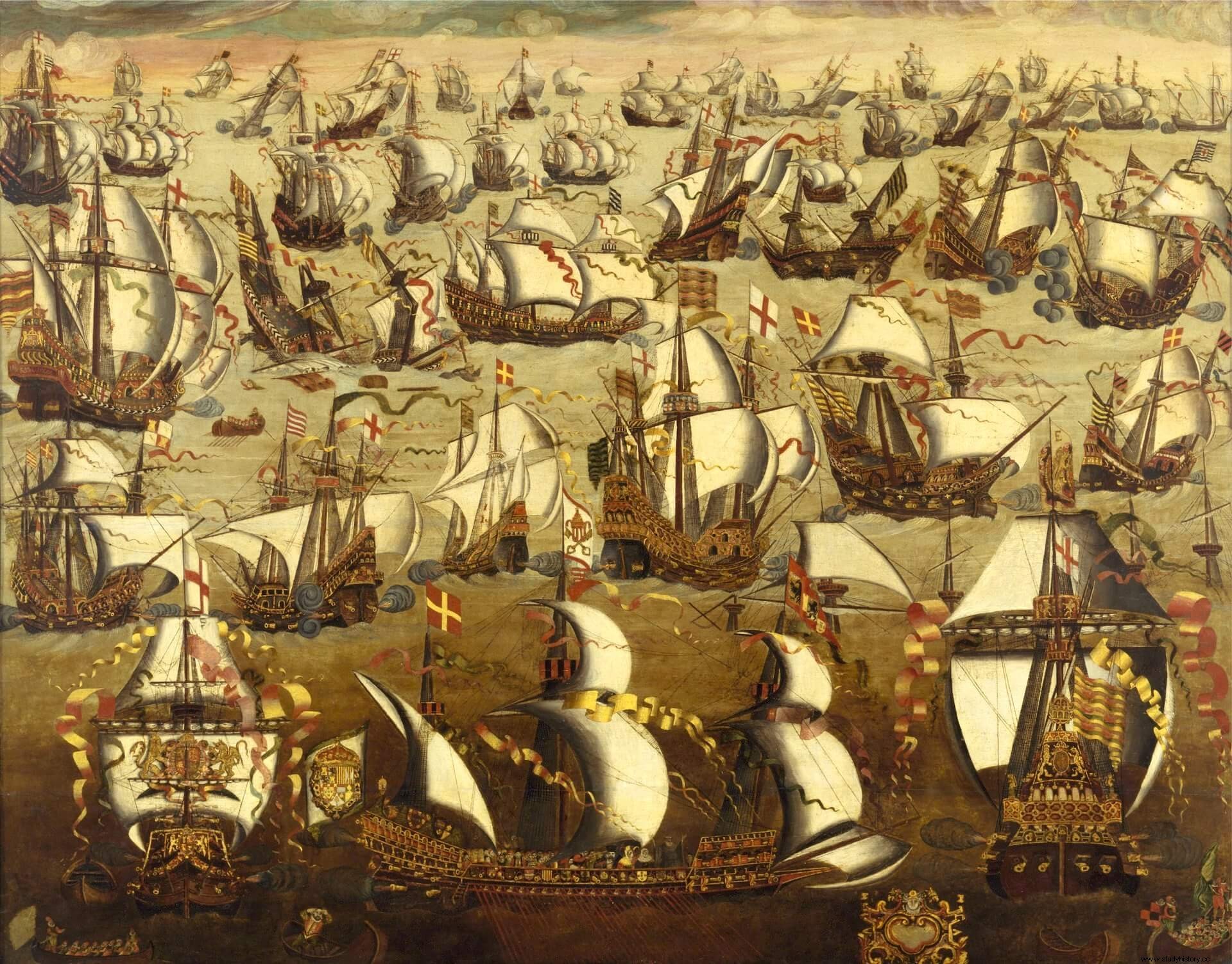
Don Alonso Pérez de Guzmán y Sotomayor He was born on September 1, 1549 in Sanlúcar de Barrameda. In 1556 his father, Don Juan Clarós de Guzmán, died, and he became Count of Niebla, being a minor. Two years later his grandfather, Don Juan Alonso Pérez de Guzmán, died and he became Duke of Medina Sidonia . During his childhood, his mother, Doña Leonor de Sotomayor y Zúñiga, acts as tutor and administrator of the house and defends the interests of her son.
In 1565, Doña Leonor begins to negotiate with the princes of Éboli the terms of the future marriage bond that her children would star in. In 1566, the Countess of Niebla arranged with Don Ruy Gómez de Silva and his wife, Doña Ana de Mendoza, the marriage by future words between her son Don Alonso and Doña Ana de Silva. To this end, on April 22 of that year, Doña Leonor signed, before Francisco Nuño de Escobar, notary public of Sanlúcar de Barrameda, a power of attorney in favor of Pedro de Guzmán, Count of Olivares, and Antonio de Guzmán, Marquis of Ayamonte, to that they deal on behalf of the VII Duke of Medina Sidonia with the conditions of the marriage, an agreement that would arrive two months later with the signing of the marriage agreements, on June 3, 1566, with all the conditions, clauses, forces, renunciations and penalties that considered to fulfill the betrothal. The marriage was finally ratified in court on November 4, 1578. With this link, Doña Leonor de Sotomayor assured the future of her son and her lineage by linking him to a house that rivaled that of the Medina Sidonia in fortune, power and wealth. influence.
The Duke had one of the greatest fortunes in Europe and the most powerful stately state of Castile thanks to the income that his domains in Lower Andalusia left him, standing out above all those that came from his almadrabas, and the possession of Sanlúcar de Barrameda , with the rights derived from the collection of the almojarifazgo in its customs through the loading and unloading of merchandise in its ports. All that power was legitimized by the prestige that his lineage had accumulated by faithfully serving the Crown of Castile since the time of Don Alfonso Pérez de Guzmán, "the Good", a commitment that was perfectly represented in the motto of the home:Praefere Patriam Liberis Parentem Decet; "A father must put the country before his children."
Loyal servant of the Crown
Medina Sidonia spent his first years at the head of his states controlling, on the one hand, the coasts of the Strait of Gibraltar due to the numerous Turkish incursions through those waters, which threatened the routes Atlantic trades; on the other, the border with Portugal in the Algarve area due to the interests shown by the Portuguese crown on the African coasts, and last but not least, in the control of Indian trade, which involved a considerable effort in diplomatic work and military logistics, circumstances that allowed Don Alonso to put his skills and resources at the service of the Crown to recover the prestige lost due to the lack of political presence of his lineage during his minority. He was in charge of the repatriation of the body of the Portuguese monarch Sebastián I, who died during the battle of Alcazarquivir, and of the surviving Portuguese noblemen, both fundamental tasks for the aspirations of Felipe II to the throne of Portugal.

The death of Don Enrique of Portugal caused Philip II prepare a military campaign to ensure his access to the Portuguese throne. He appointed Medina Sidonia captain general of the cavalry and infantry of Andalusia , entrusting him with the defense of the border with Portugal from Ayamonte to the current province of Badajoz, a task that Don Alonso fulfilled, anticipating the royal mandate, preparing the defenses of the border places and forming levies in his domains, a measure applauded by Philip II, who he urged him to do the same in the rest of the territories that had been placed under his command. The duke made several intimidating raids on Portuguese lands to finish off the Habsburg's adversaries, using weapons from his own arsenal and lent the Crown the cost of all the operations.
Philip II rewarded the Duke of Medina Sidonia by allowing him to attend his coronation. He also received the necklace of the Order of the Golden Fleece and he was appointed governor and captain general of the State of Milan, a position he never held, surely because it did not suit his interests, since time and time again he delayed his departure to attend to the most urgent matters of his states, and the military responsibilities and diplomats that he continued to have in Baja Andalucía.
In the summer of 1581 Felipe II put an end to this situation by temporarily relieving Don Alonso of his post in Milan and placing him in command of a fleet of seventeen galleys to put an end to the threat that It meant the presence of Turkish corsairs in the coastal strip that went from Cape San Vicente to Gibraltar.

Milan was very far from the interests of Medina Sidonia , who longed for a position that was related to Portugal, since after joining the Castilian crown it offered many possibilities for growth:an increase in his military skills in the waters of the Strait, which would allow him to control maritime trade between the Mediterranean and the Northern Europe, and trade with the Indies, an area in which Don Alonso had been accumulating such a quantity of skills that his presence was essential when it came to solving all the logistical matters derived from the preparation of the ships that were part of the fleet of Indians. In fact, on May 11, 1586, Don Alonso was appointed superintendent for the dispatch of the fleet to New Spain and, on June 9 of that same year, superintendent for the dispatch of Tierra Firme.
Medina Sidonia and the Great Army
In 1587 he was commissioned to seize all ships arriving from enemy lands to Andalusian ports; He stopped at least eighty-seven ships from the Nordic countries, Flanders, Scotland, Ireland and Great Britain, in the ports of Malaga, Gibraltar, Cádiz, El Puerto de Santa María, Sanlúcar de Barrameda, Huelva, Lepe and San Juan of the port. All of them were prosecuted for being suspected of belonging to enemy nations. In fact, twenty-two of these ships were part of the Great Navy in the Squadron of Urcas.

Thanks to the location of its stately estates, and the control it maintained over strategic ports such as Huelva, San Juan del Puerto and, above all, Sanlúcar de Barrameda, key in the trade routes between northern Europe and the Mediterranean countries; to the wide network of international contacts that he had with foreign ambassadors and merchants from places as diverse as Venice, Florence, Genoa, Great Britain, Germany, Sweden or Denmark, and to the experience acquired during the years of service he had rendered to the crown organizing the defense of the Andalusian coasts and the readiness of the Indies fleets, in addition to the prestige and wealth accumulated over generations by his ancestors, the Duke of Medina Sidonia emerged as the ideal candidate to take charge of the chaos that existed in the port of Lisbon after the death of Álvaro de Bazán , and to organize everything according to the wishes of the Catholic King, as he actually did.
If Guzmán alleged lack of experience to lead the Great Navy when he was appointed Captain General of the Ocean Sea and from the coasts of Andalusia, it was because he surely must have sensed that the English company had many possibilities of failing. That he was accused of lack of ability and leadership, and of being seasick, contrasts sharply with his record of service to the Crown and the fact that the king allowed him to keep all the dignities he had received. Q>
These lines help us to discover one of the most important and influential personalities of the reign of Philip II, unfairly mistreated, like so many others, by classical historiography.
Bibliography
Salas Almela, L. (2009):"A position for the Duke of Medina Sidonia:Portugal, the Strait of Gibraltar and Indian trade (1578-1584)". Magazine of the Indies , Vol. 69, No. 247, p. 11-38.
Salas Almela, L. (2008):Medina Sidonia:the power of the aristocracy, 1580-1670 . Madrid:Marcial Pons.
Calvar Groos, J. (1989-2014):The Battle of the Ocean Sea. Documentary corpus of the hostilities between Spain and England (1568-1604) , 5 vols. Madrid:Ministry of Defense-Spanish Navy.
